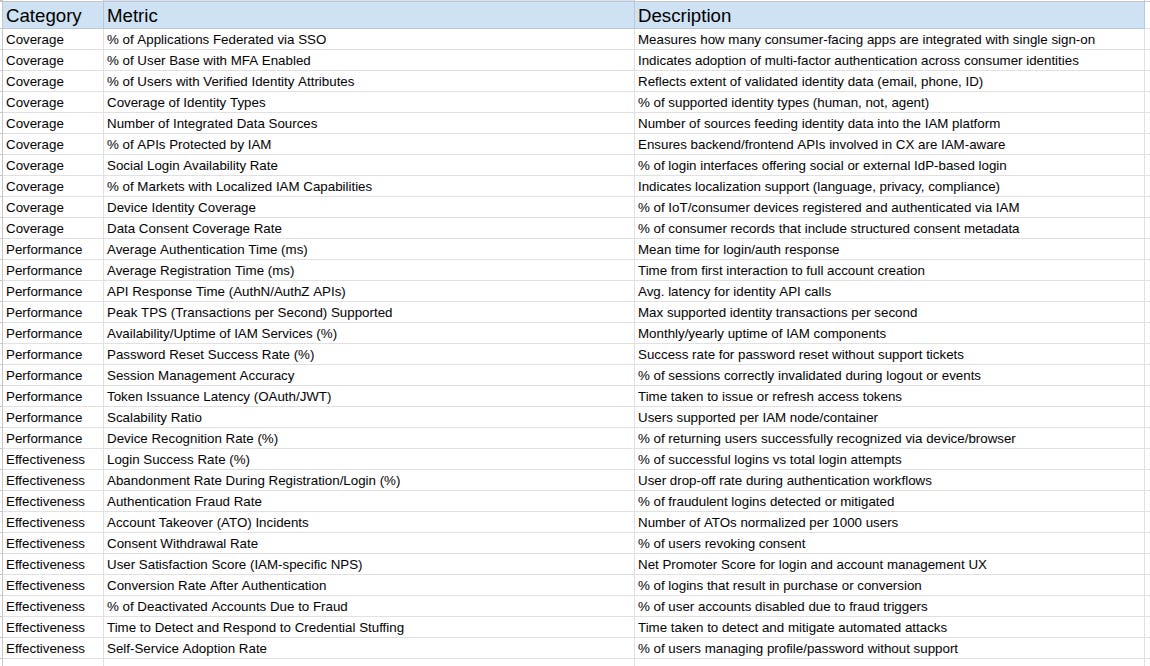Cheat Sheet: Top 30 IAM Metrics for B2C
Understanding the Coverage, Performance and Effectiveness of B2C IAM
Why?
Customer and Consumer Identity and Access Management has become a table stakes way for the modern enterprise to reach new and existing prospects and deliver personalised content and services. From retail, financial services and government departments, B2C external identity requires a broad set of capabilities with subtly different functional and non-functional requirements to that of B2E identity.
But to that end, this increased responsibility much be measured, with the correct stakeholders being involved to help define what they need and how it can be tracked. The rise of outcome based metrics is seen as an attempt to align the often abstract aspects of a project or piece of technology with tangible business related tasks and functions. This approach is now being applied to the IAM world allow non-technical stakeholders to see the value of their IAM investments and more importantly provide a foundation for identifying where changes need to be made.
What?
A common way to approach metrics is to take a look at the coverage, performance and effectiveness angles. This essentially allows a way of understanding not only the breadth of IAM capability deployment, but perhaps also the depth of integration. Effectiveness provides a way of considering the user impact of particular controls or capabilities. For example, having a metric for MFA enrolment and usage is only one aspect to consider - especially if that control then results in slower login duration, calls to the help-desk or multiple reset requests due to difficult to understand processes.
The below is an example set of metrics to consider with respect to a consumer/customer and citizen B2C environment.
Metrics Examples
This is a living document and more entries will be added over time. Please get in touch if you have suggestions or improvements.
Last updated: 19 September 2025



